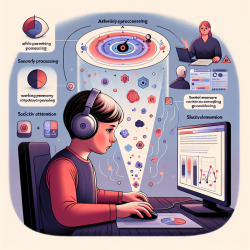As a Speech Language Pathologist (SLP), navigating the world of Individualized Education Programs (IEPs) can sometimes feel overwhelming, especially when you’re providing services through a telepractice model like TinyEYE. The stakes are high, and the details are many. But with the right strategies, you can turn IEP planning and meetings into smooth and productive processes. Here are five key strategies to help you feel more confident and informed.
1. Preparation is Key
Before the IEP meeting, take the time to review all relevant documents and data. This includes previous IEPs, progress reports, and any recent assessments. Having a comprehensive understanding of the student’s history and current needs will allow you to contribute meaningfully to the discussion.
2. Set Clear Goals
IEPs are all about setting specific, measurable, achievable, relevant, and time-bound (SMART) goals. Work collaboratively with teachers, parents, and other professionals to establish goals that are realistic and tailored to the student's unique needs. Clear goals not only guide your therapy sessions but also provide a benchmark for measuring progress.
3. Utilize Technology Effectively
In a telepractice setting, technology is your best friend. Make sure you are comfortable with the online platforms and tools you’ll be using. Conduct a tech-check before the meeting to ensure everything runs smoothly. Utilizing features like screen sharing can make it easier to present data and collaborate with the team.
4. Foster Open Communication
Effective communication is the cornerstone of successful IEP meetings. Encourage an open dialogue where all team members, including parents, feel comfortable sharing their perspectives. Listen actively and validate their concerns. This collaborative approach ensures that everyone is on the same page and working towards the same goals.
5. Follow-Up and Follow-Through
After the IEP meeting, it’s crucial to follow up on the agreed-upon actions. Document the meeting outcomes and share them with the team. Regularly check in with the student, parents, and teachers to monitor progress and make any necessary adjustments to the IEP. Consistent follow-through demonstrates your commitment to the student’s success and helps build trust with the team.
By implementing these strategies, you can transform IEP planning and meetings from daunting tasks into organized and effective processes. Remember, your role as an SLP is vital in shaping the educational experiences and outcomes for your students. With preparation, clear goals, effective use of technology, open communication, and diligent follow-through, you can make a significant impact through your speech therapy telepractice.
At TinyEYE, we understand the challenges and rewards of providing online therapy services. We are here to support you every step of the way. Happy IEP planning!










